The artistry of graphic design captures attention, evokes emotion, and drives action. But behind every visually striking poster or compelling website lies a robust framework that governs the relationship between the designer and the client: the graphic design contract. This document is more than just a binding agreement; it’s a declaration of mutual respect, understanding, and clarity.
Professionals, whether seasoned or new to the field, recognize the imperative of a well-drafted contract that covers all the nuances of their collaboration. In this article, we delve into the nuances and intricacies of these contracts, accompanied by a thorough sample and template, ensuring that every design endeavor is anchored by clear terms and conditions.
Table of Contents
What is a graphic design contract?

A graphic design contract is a formal written agreement between a designer or design agency and a client that outlines the scope of work, payment details, timelines, intellectual property rights, confidentiality clauses, and other terms and conditions pertaining to a specific design project.
This contract serves as a clear framework for the obligations and expectations of both parties, ensuring that there’s a mutual understanding about deliverables, revisions, and compensation, thereby preventing potential misunderstandings or disputes in the course of the project.
Graphic Design Contract Templates
Graphic designers create visual concepts that communicate messages. Using contract templates allows formally defining client projects. The templates cover all aspects of the creative partnership.
Details in a design contract template include the client name, project scope, timeline and compensation. The number of concepts, revisions and file formats are agreed upon. Licensing, confidentiality and intellectual property clauses are included. Billing schedules and payment methods are defined. Approval protocols and termination conditions are established.
Comprehensive graphic design templates allow customization for unique projects. Designers specify deliverables, milestones and pricing while maintaining template thoroughness. Following standard structures lends credibility with clients. Templates ensure all contractual details are covered. For designers, templates bring efficiency to project initiation. Clients gain clarity on expectations and protections. Signing design contracts from templates leads to positive relationships and successful creative work.
Why do you need a graphic design contract?
A graphic design contract is a crucial document that outlines the terms and conditions of a professional relationship between a designer (or a design agency) and a client. It’s an agreement that defines the scope of work, deliverables, timelines, payment terms, intellectual property rights, and other details related to the project at hand. Both parties usually sign this document before any work begins.
There are several reasons why a graphic design contract is needed:
- Defines Scope of Work: One of the most essential functions of a graphic design contract is to provide a clear definition of the work that needs to be done. This section might include the description of the project, deadlines, specific tasks to be performed, project stages, and final deliverables. This helps to ensure that both the client and the designer are on the same page about the work to be done, reducing misunderstandings or miscommunications that could lead to disputes down the line.
- Sets Payment Terms: A contract clearly outlines the payment terms. This includes the total amount to be paid, the payment schedule, the preferred payment method, and potential penalties for late payments. This ensures that the designer gets paid for their work in a timely and agreed-upon manner.
- Outlines Revision & Cancellation Policies: It’s common for clients to request changes after the initial designs have been presented. A graphic design contract should state the number of revisions included in the project price and how additional changes will be billed. It should also detail the protocol for project cancellation, including any fees that may apply.
- Protects Intellectual Property Rights: In the world of design, intellectual property is vital. A well-drafted contract should specify who owns the rights to the work produced, whether the rights are transferred upon payment, or if the designer retains certain usage rights. This can help to avoid copyright infringement issues in the future.
- Manages Expectations: A graphic design contract manages the expectations of both parties. It stipulates the nature of the relationship (e.g., an independent contractor vs. an employee), the communication methods and frequency, and the dispute resolution mechanisms, among others.
- Mitigates Risks & Legal Disputes: In case of disagreements or breaches, a contract serves as a legal instrument that can be used to resolve issues. It protects the interests of both parties and provides legal remedies. Without a contract, it can be more challenging and costly to settle any disputes that arise.
- Maintains Professionalism: A contract underscores the professionalism of the designer. It shows they take their work seriously and are committed to delivering quality work. It also demonstrates that they respect their clients by setting clear guidelines and expectations for the project.
- Ensures Confidentiality: Often, graphic designers might have access to sensitive information about a client or their business. A contract can include a confidentiality clause that protects this information, preventing the designer from disclosing it to third parties.
When should you send a graphic design contract to clients?
Sending a graphic design contract to clients at the right time is vital for ensuring a smooth workflow and protecting both parties involved. Here’s when you should consider sending a contract:
- After the Initial Consultation: Once you’ve met with the client (whether in person, over the phone, or via a virtual meeting) and have discussed the general scope and specifics of the project, but before you start any actual work. This ensures that you’re not investing time and resources into a project without a signed agreement in place.
- Before Providing Detailed Proposals or Mock-ups: Some designers choose to give clients a brief idea or a sketch before finalizing the contract, but any detailed proposals or mock-ups should be covered by an agreement to protect your ideas and designs.
- Upon Changes in Scope or Deliverables: If, during the course of the project, the client requests significant changes or additions to the work initially agreed upon, it might be a good idea to revisit the contract. A new or revised contract will clearly define these changes and any associated costs, ensuring you’re compensated fairly for any extra work.
- When Working on Large Projects: For more extensive projects that span several weeks or months, you might consider breaking down the contract into phases. Send and get approval on contracts for each phase as the project progresses. This approach can make the project more manageable and ensures clear expectations at every stage.
- Before Receiving Any Payments: Always have a signed contract before accepting any form of payment, be it a deposit or the full amount. This provides a record of the agreed-upon payment terms and offers protection if payment disputes arise later.
- If a Previous Contract Expires: For clients you have ongoing relationships with, if the terms of a previous contract have been fulfilled or the contract’s timeframe has ended, you’ll need to send a new contract for subsequent projects or phases.
- For Renewals or Maintenance Agreements: If you’ve designed something like a website and the client wants you to be on retainer for updates, maintenance, or other recurring services, send them a contract for this continued relationship.
A few general tips:
- Be Proactive: It’s always better to send the contract sooner rather than later. Being proactive shows professionalism and ensures you and the client are on the same page from the outset.
- Clarify Any Doubts: Before the client signs the contract, ensure they have read and understood all its terms. Encourage them to ask questions and clarify any points of confusion.
- Stay Flexible: While it’s essential to have a structured contract, be open to negotiating certain terms if the client has reservations or particular needs.
What information should be included in a graphic designer contract?
Creating a graphic designer contract is crucial for establishing a clear understanding between the designer and the client. It provides a solid framework for the project, ensuring that both parties are aware of their responsibilities and rights. Here’s a detailed guide on what information should be included in a graphic designer contract:
1. Parties Involved
- Client Details: Name, address, contact information, and company details (if applicable).
- Designer Details: Name, address, contact information, and any business or trading name.
2. Project Overview
- A brief description of the project, outlining what the client is hiring the designer to create.
3. Scope of Work
- Detailed description of the services the designer will provide.
- Deliverables: What final products will be delivered (e.g., logos, websites, brochures), and in which formats.
- Phases or milestones, if the project is broken down into parts.
4. Payment Details
- Total project fee.
- Payment structure: e.g., half upfront and half upon completion, or broken down by milestones.
- Accepted payment methods.
- Late payment penalties or interest rates.
5. Timeline
- Start date and projected end date.
- Key milestones and deadlines.
- Any stipulations for project delays.
6. Revisions & Alterations
- Number of revisions included in the initial fee.
- Charges for additional revisions or out-of-scope requests.
- Process for requesting and making revisions.
7. Ownership & Rights
- Details on the copyright of the final designs. Typically, designers transfer copyright to the client upon full payment, but this can vary.
- Rights to display work in portfolios or promotional materials.
- Any licensing arrangements, if not an outright transfer of rights.
8. Confidentiality
- A clause stating that the designer will not share or misuse any of the client’s confidential information.
9. Termination
- Conditions under which either party can terminate the contract.
- Refund or payment conditions upon termination, such as kill fees or compensation for work completed.
10. Liability & Warranty
- Statements on the designer’s liability regarding the services provided.
- Any warranties or guarantees provided on the work.
11. Feedback & Communication
- Preferred methods of communication between client and designer.
- Expected frequency and turnaround times for feedback.
12. Additional Expenses
- Clauses about who covers expenses like printing, software purchases, or other unforeseen costs.
13. Force Majeure
- A clause stating that neither party is responsible for delays or failures due to unforeseen events beyond their control, such as natural disasters.
14. Non-Compete & Non-Solicitation
- If desired, clauses that prevent the designer from working with direct competitors or from soliciting the client’s employees or customers.
15. Governing Law
- The legal jurisdiction and laws that will govern the contract in case of disputes.
16. Dispute Resolution
- Process for handling any disagreements, such as mediation or arbitration before taking legal action.
17. Signatures
- Spaces for both the designer and client (or their representatives) to sign and date, indicating their agreement to the terms.
Tips:
- Always have a lawyer review your contract to ensure it’s legally sound and suitable for your specific needs.
- It’s a good idea to use a contract template as a starting point, but always customize it to fit the specifics of your project and client relationship.
- Communication is key. Make sure both parties have a clear understanding of all terms before signing.
How to Write a Graphic Design Contract?
Creating a clear and comprehensive freelance graphic design contract is crucial for both you and your client. It sets expectations, determines the scope of work, and ensures that both parties understand their responsibilities. Here’s a step-by-step guide, complete with examples, to help you craft your contract.
1. Introduction & Parties Involved
Start your contract by stating your name or business name and the name of your client. This section establishes the parties involved in the contract and sets a formal tone.
Example: “This agreement is made on [Date], between [Your Name or Your Business Name], hereinafter referred to as the ‘Designer’, and [Client’s Name or Client’s Business Name], hereinafter referred to as the ‘Client’.”
2. Scope of Work
Clearly outline the services you’re offering. Detail every task or deliverable that the client expects from you. This prevents scope creep, where additional tasks are added without corresponding compensation.
Example: “The Designer agrees to provide graphic design services for the Client, which include creating a logo, business card design, and a tri-fold brochure. Any additional services not mentioned here will be billed separately.”
3. Compensation & Payment Terms
Specify your rates, the total amount to be paid, any deposit required, and when payments are due. It’s also essential to mention the accepted methods of payment.
Example: “For the services outlined in the scope of work, the Client agrees to pay the Designer a total of $2,000. A 50% deposit is required upfront, with the remaining 50% due upon final delivery of all designs. Payments are accepted via bank transfer or PayPal.”
4. Timeline & Deliverables
Detail the expected timeline for your services, including any milestones and the final deadline. This ensures that the client knows when to expect your work.
Example: “All initial design drafts will be provided to the Client within two weeks of receiving the deposit. Finalized designs will be delivered within one month of the contract’s start date. Specific milestones include: Logo draft by [Date], Business card draft by [Date], and Brochure draft by [Date].”
5. Revisions & Feedback
Clearly state how many revisions are included in your price and what happens if the client exceeds this number. This section helps in managing client expectations.
Example: “The service package includes up to three revisions for each design item. Any additional revisions beyond this will incur a fee of $100 per revision.”
6. Ownership & Rights
Determine who will own the rights to the final designs. You might retain the rights but give the client permission to use them, or you might transfer the rights upon payment.
Example: “Upon final payment, the Client will receive full ownership rights to the final designs. The Designer retains the right to use the designs in portfolios and promotional materials.”
7. Termination Clause
Cover what happens if either party wants to end the contract early. This protects both you and the client.
Example: “Either party may terminate this contract with a written notice of 14 days. If the Client terminates early, they are responsible for payment for all services rendered up to the termination date.”
8. Confidentiality Clause
Ensure that any sensitive information exchanged during the project remains private.
Example: “Both parties agree to keep all information, data, and materials exchanged during this project confidential and will not disclose it to third parties without written consent.”
9. Liability & Warranty
Protect yourself from any potential legal issues that could arise.
Example: “The Designer provides no warranty, expressed or implied, for the designs. The Client agrees not to hold the Designer liable for any incidental or consequential damages related to this project.”
10. Governing Law
State the jurisdiction that will govern the contract. This is crucial in case of any legal disputes.
Example: “This contract shall be governed by the laws of [Your State/Country]. Any disputes arising from this contract will be settled in [Your State/Country].”
11. Signatures
End the contract with space for both parties to sign and date. This solidifies the agreement.
Example: “By signing below, both parties agree to the terms and conditions outlined in this contract.
[Your Name/Title]
[Client’s Name/Title]
[Date]
[Date]”
FAQs
How do I determine pricing in my graphic design contract?
Pricing for graphic design services can be determined by several factors, including the designer’s experience, the complexity of the project, market demand, and the client’s budget. Designers can charge by the hour, set a flat rate for the entire project, or even use a combination of both. Researching industry standards, considering your own expertise, and evaluating the specific demands of the project can help in setting a competitive and fair price.
Who owns the rights to the design once the project is completed?
Ownership rights depend on what’s stated in the contract. Typically, once the client has paid in full, they own the rights to the final design. However, some designers retain certain rights, like showcasing the design in their portfolio. It’s essential to clarify this in the contract to avoid future disputes.
What happens if a client isn’t satisfied with the design?
The course of action for client dissatisfaction should be outlined in the contract. Typically, contracts include a certain number of revisions within the initial cost. If the client’s feedback exceeds the specified number of revisions, additional fees might apply. Clear communication throughout the project can minimize dissatisfaction.
Can either party terminate the contract prematurely?
Yes, either party can usually terminate the contract if conditions for termination, as outlined in the contract, are met. The contract should specify the notice period required, any penalties or refunds due, and the terms of payment for work already completed.
Is a verbal agreement sufficient for a graphic design project?
While verbal agreements can be legally binding in some jurisdictions, it’s always safer and more precise to have a written contract. Written contracts ensure that all terms are clearly defined, reducing the risk of misunderstandings and potential legal disputes.
How can I ensure my contract is legally sound?
To ensure your graphic design contract is legally binding and covers all necessary bases, it’s wise to consult with a legal professional, especially when crafting your initial template or when dealing with complex projects.





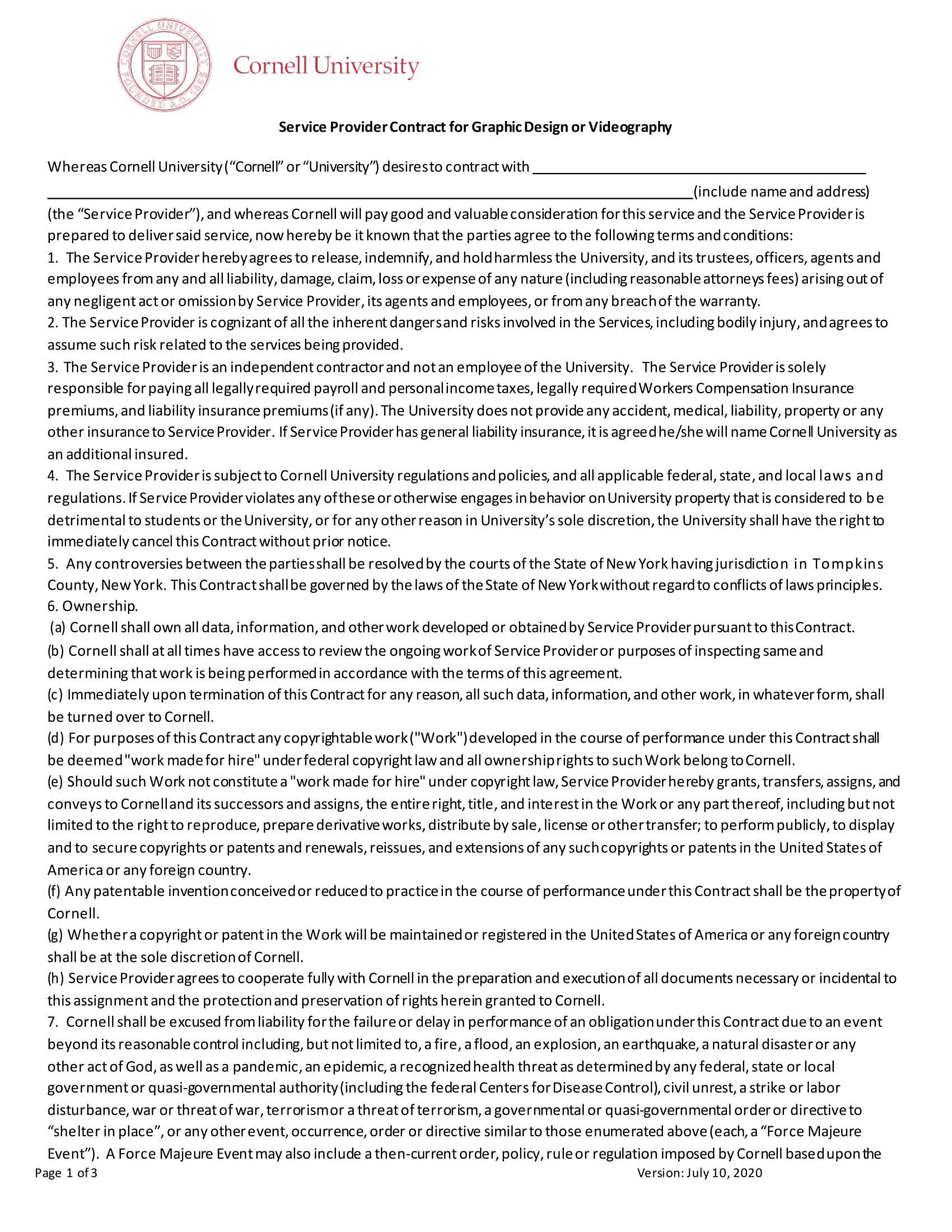


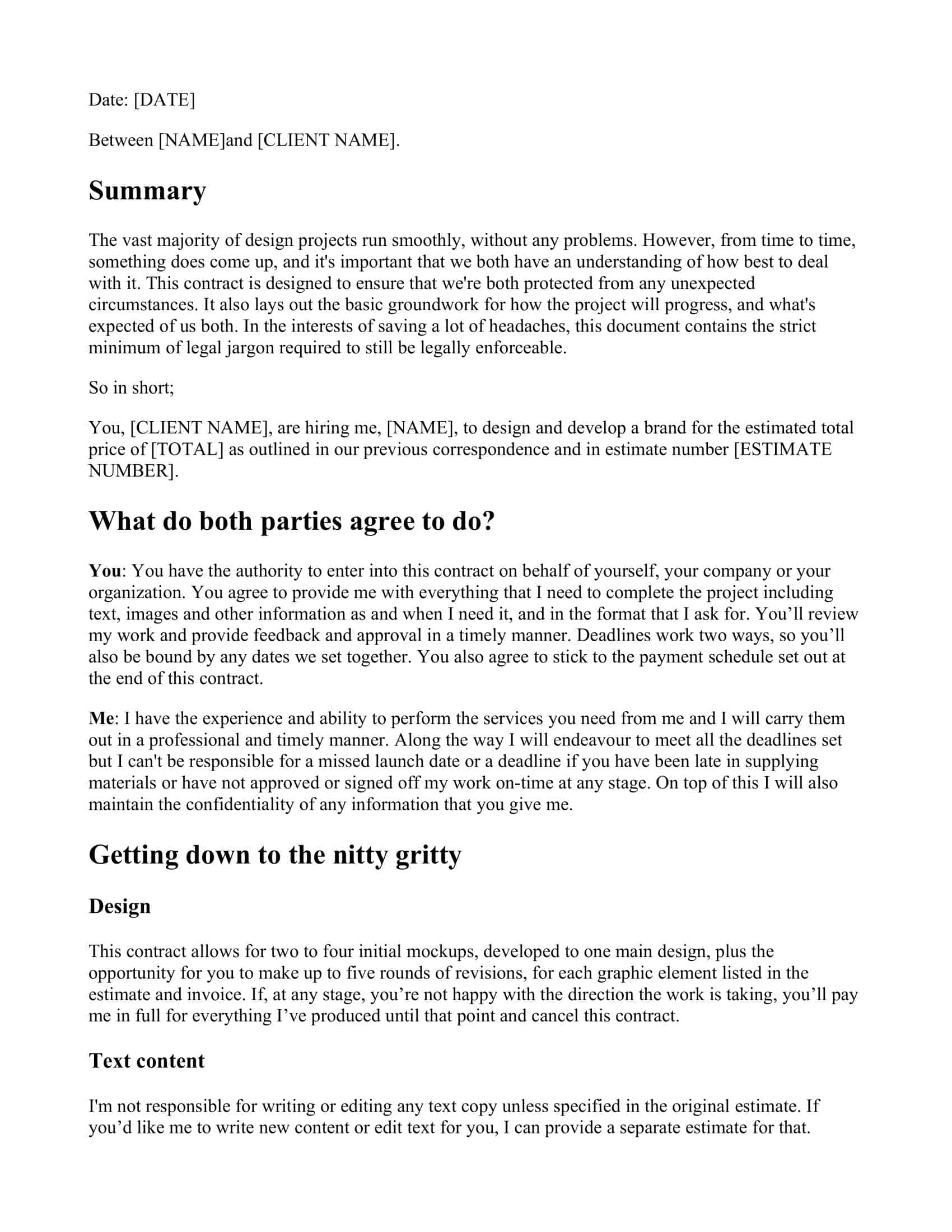


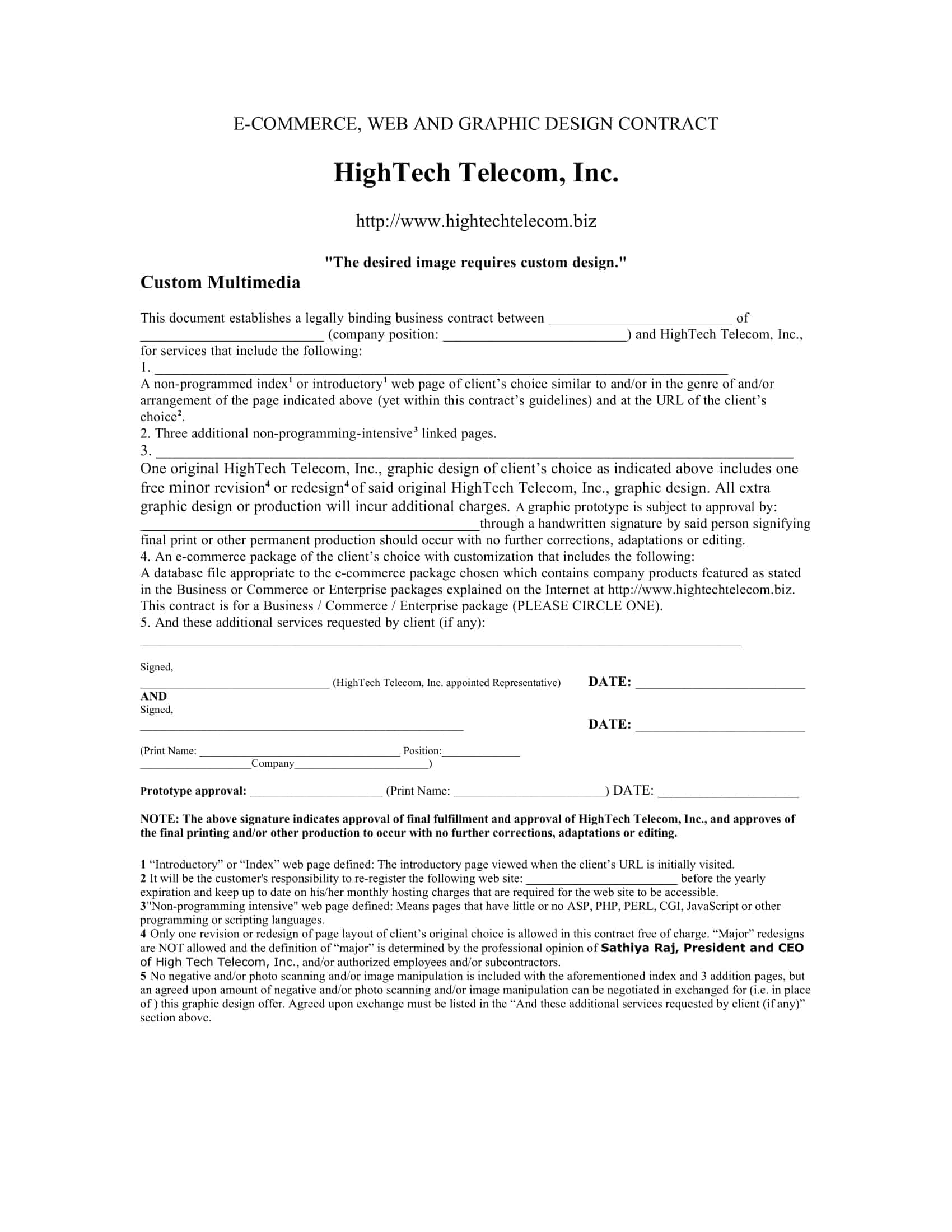
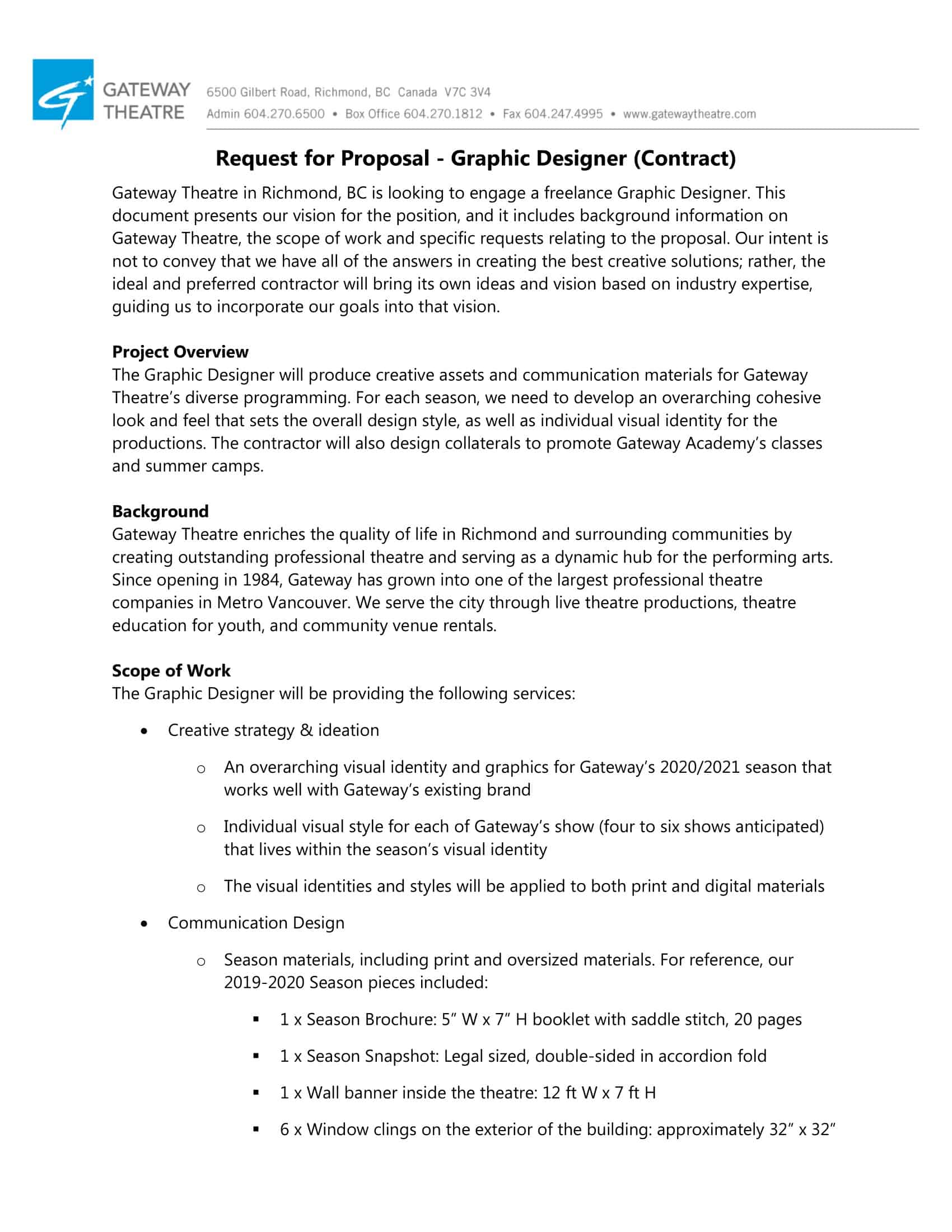
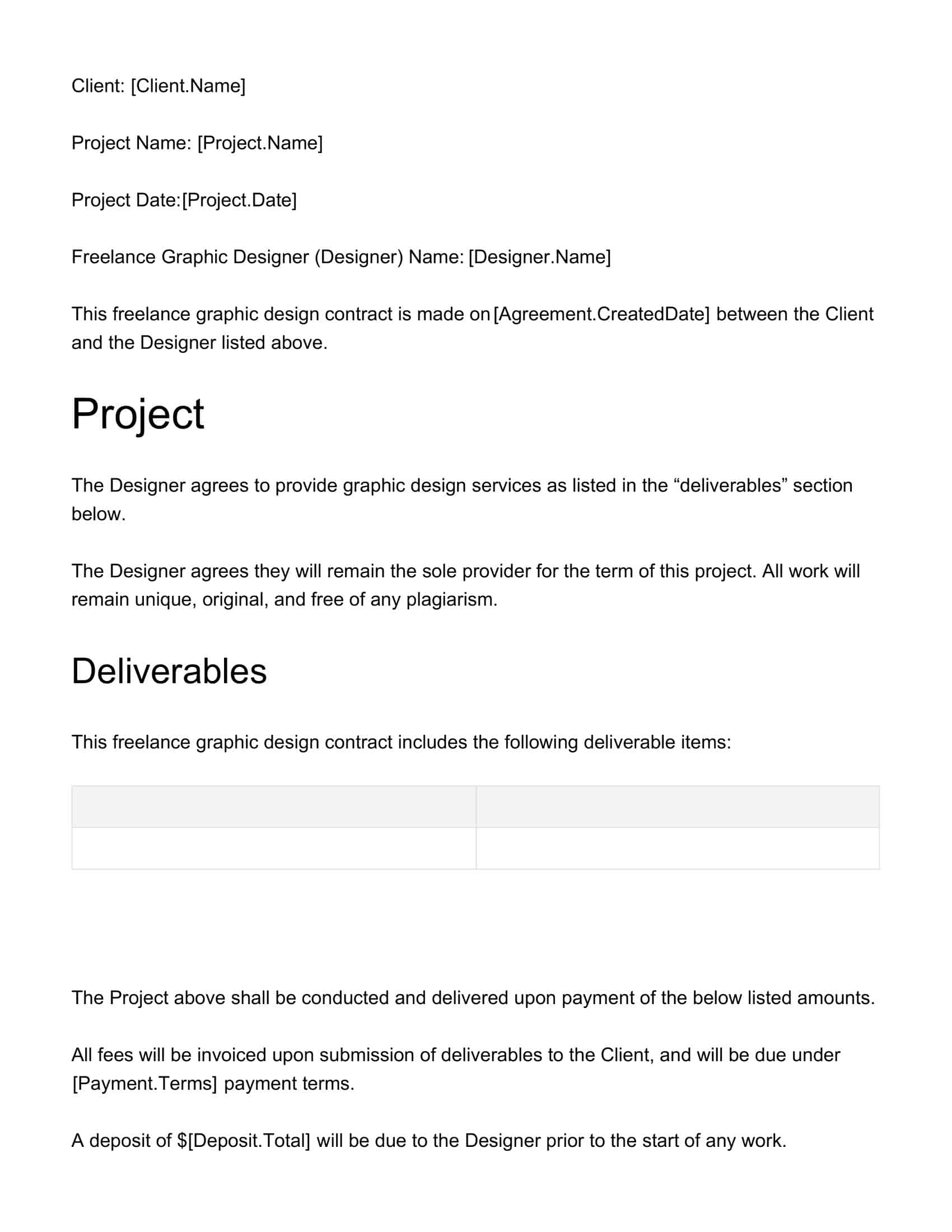

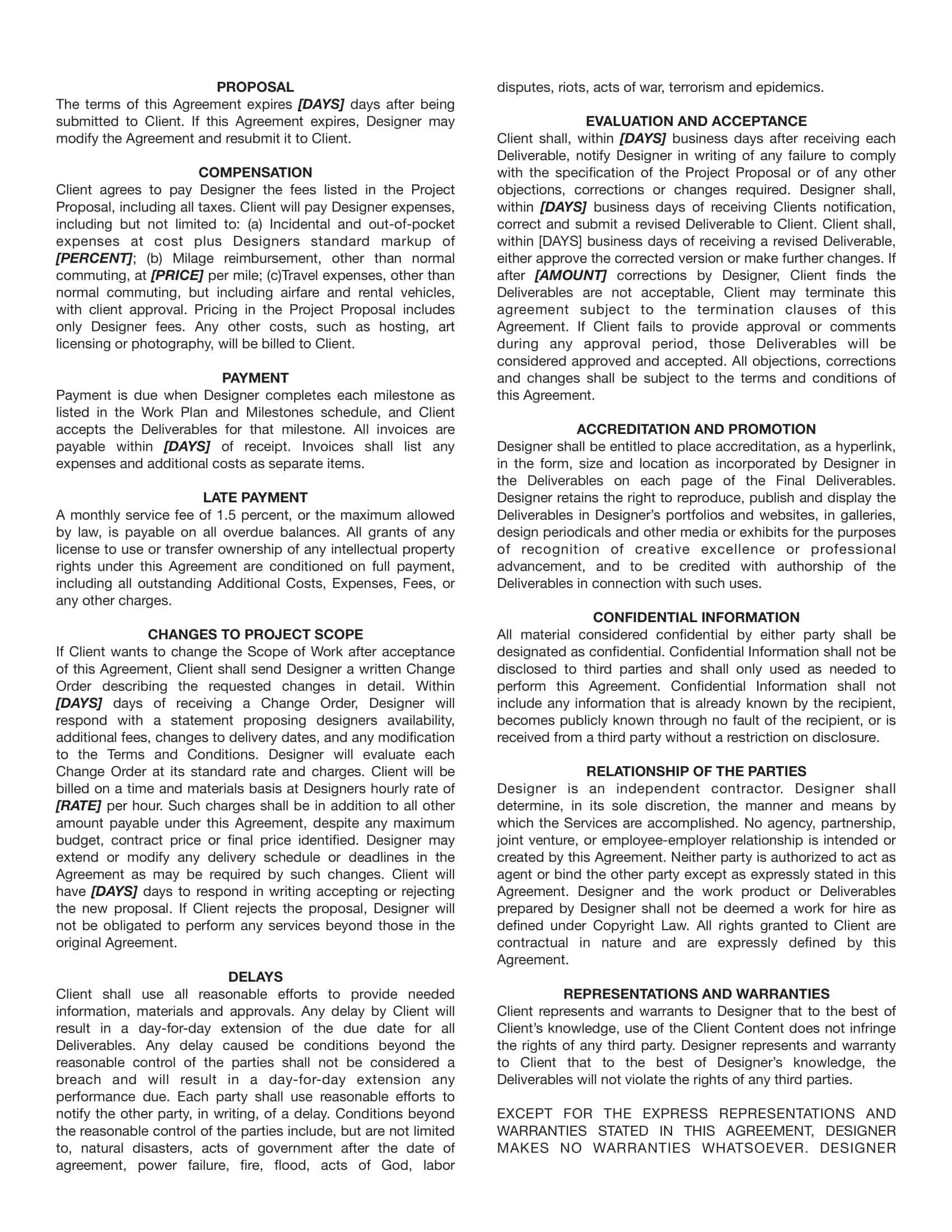
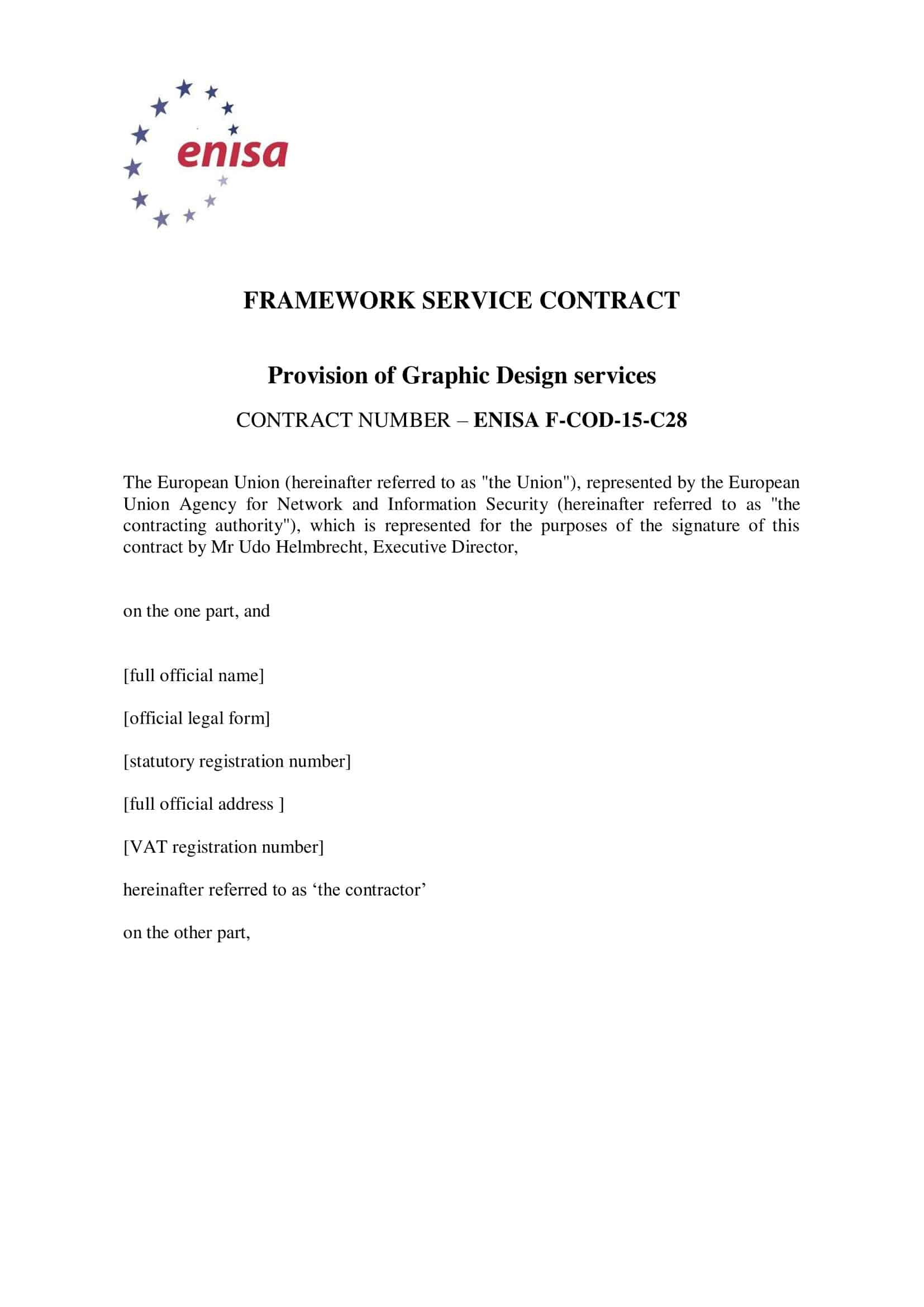


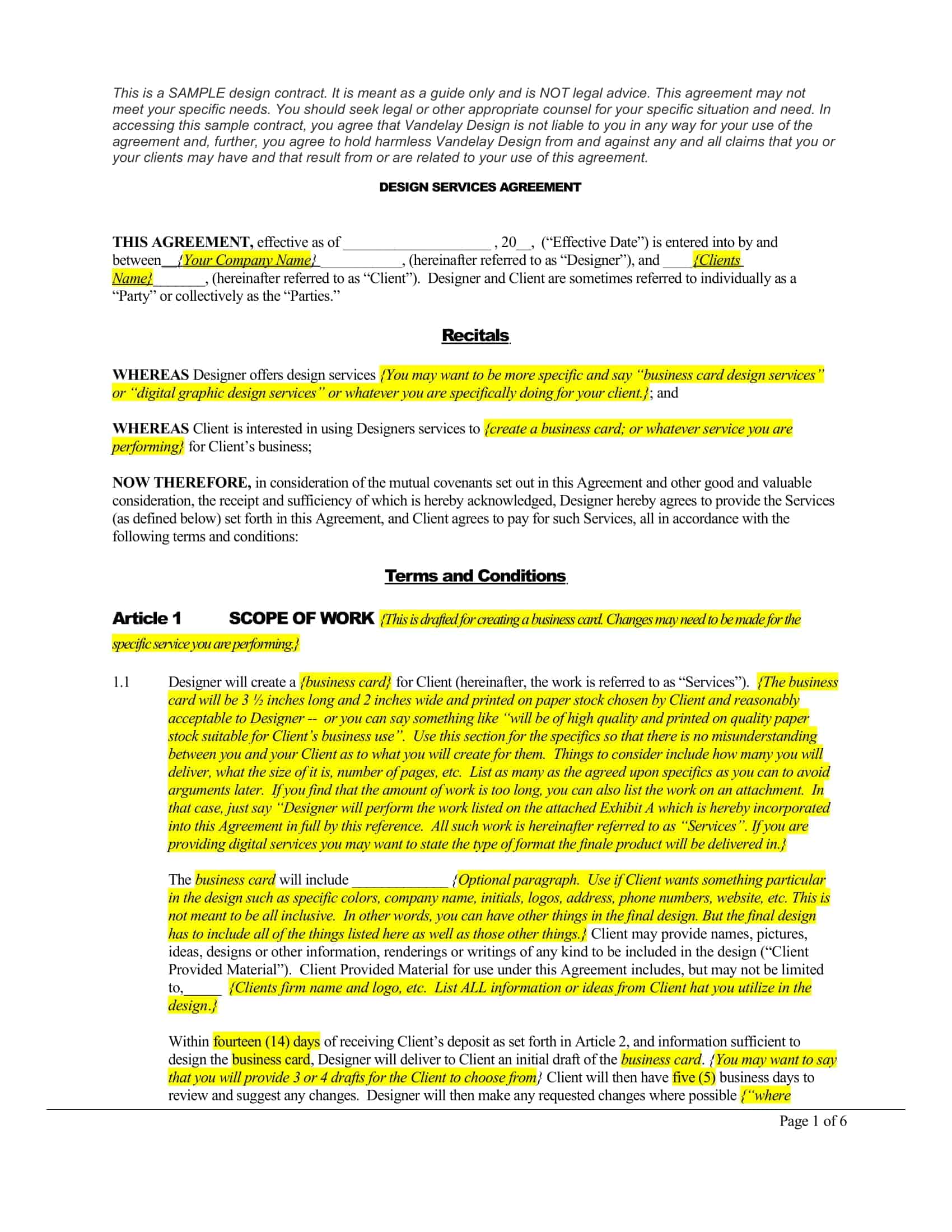
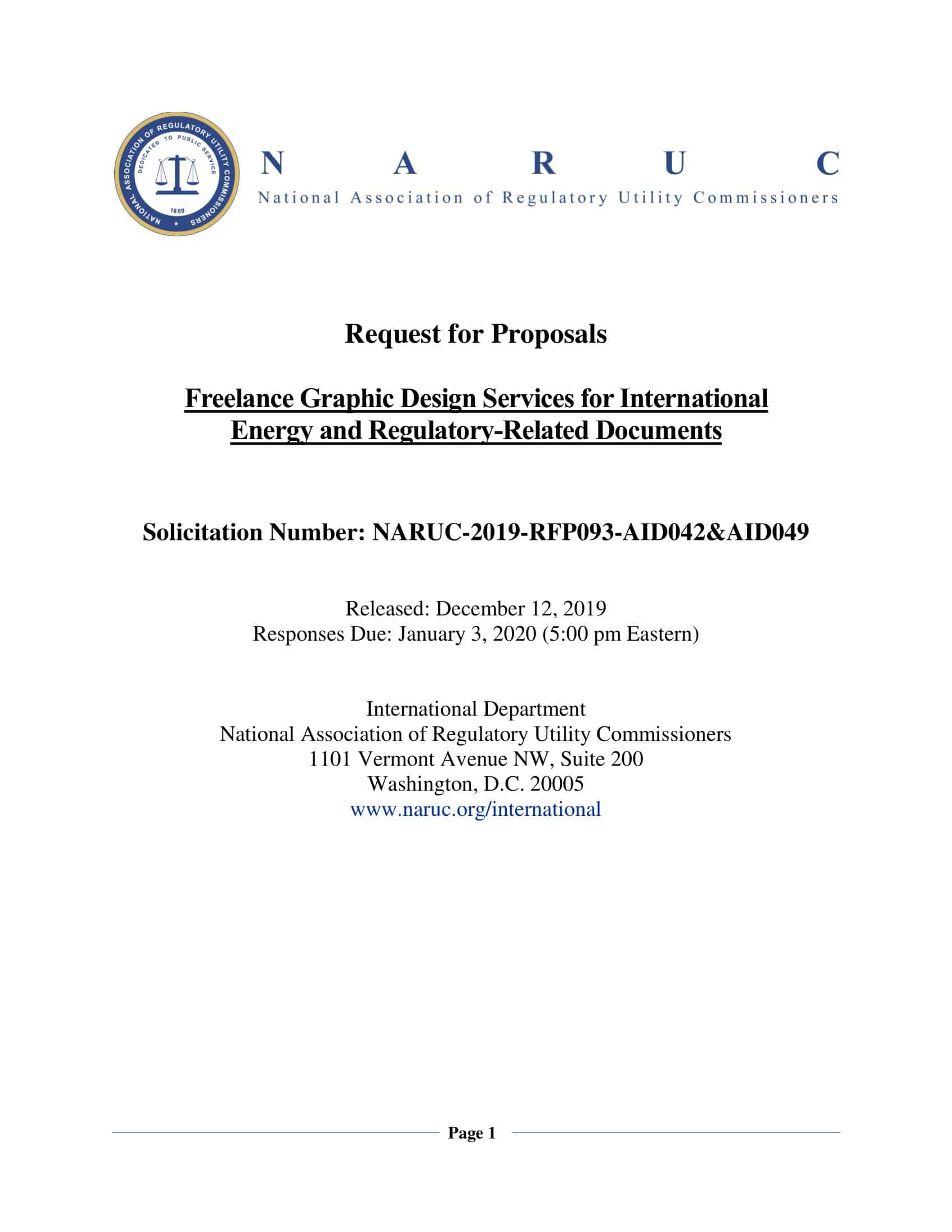

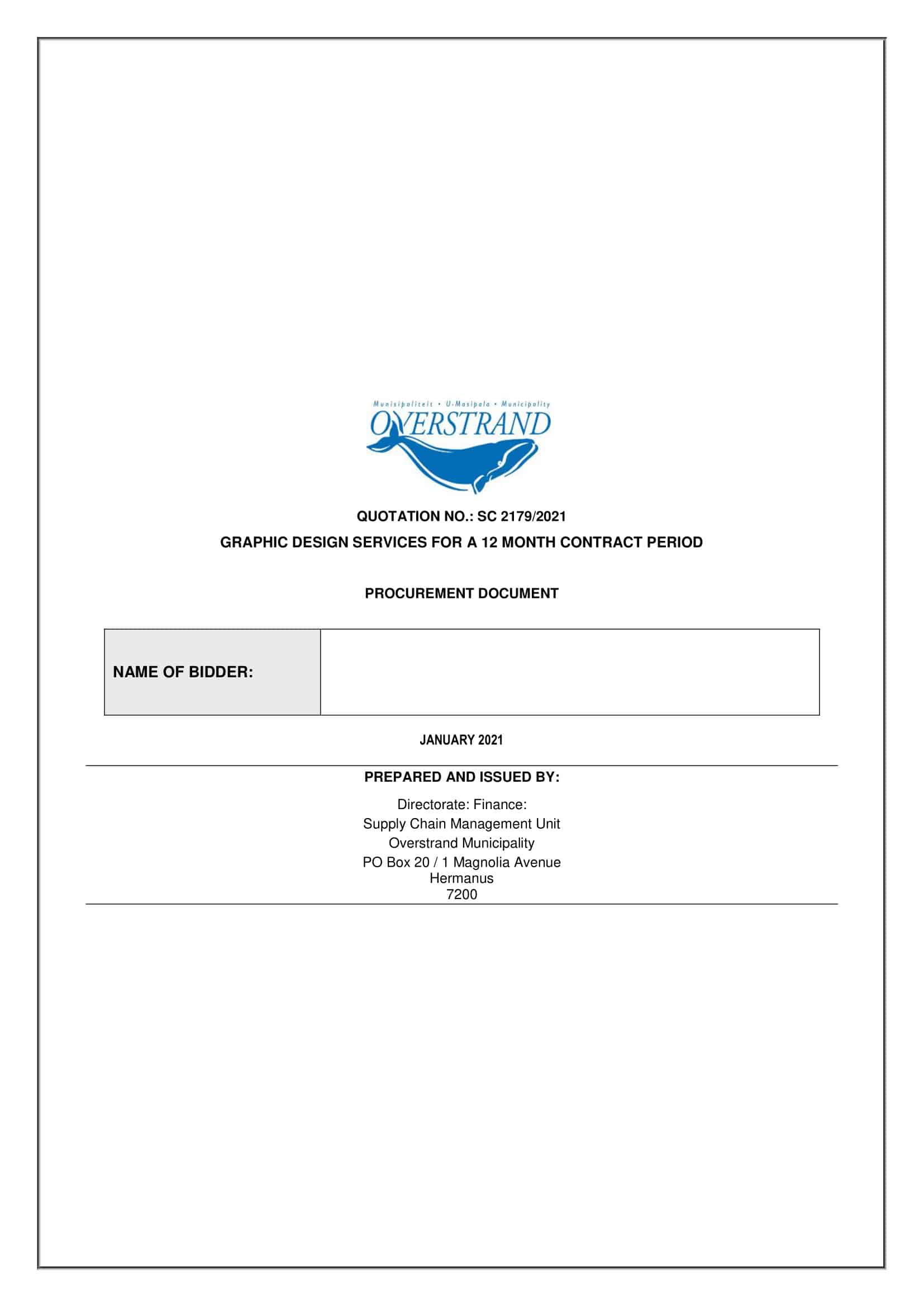



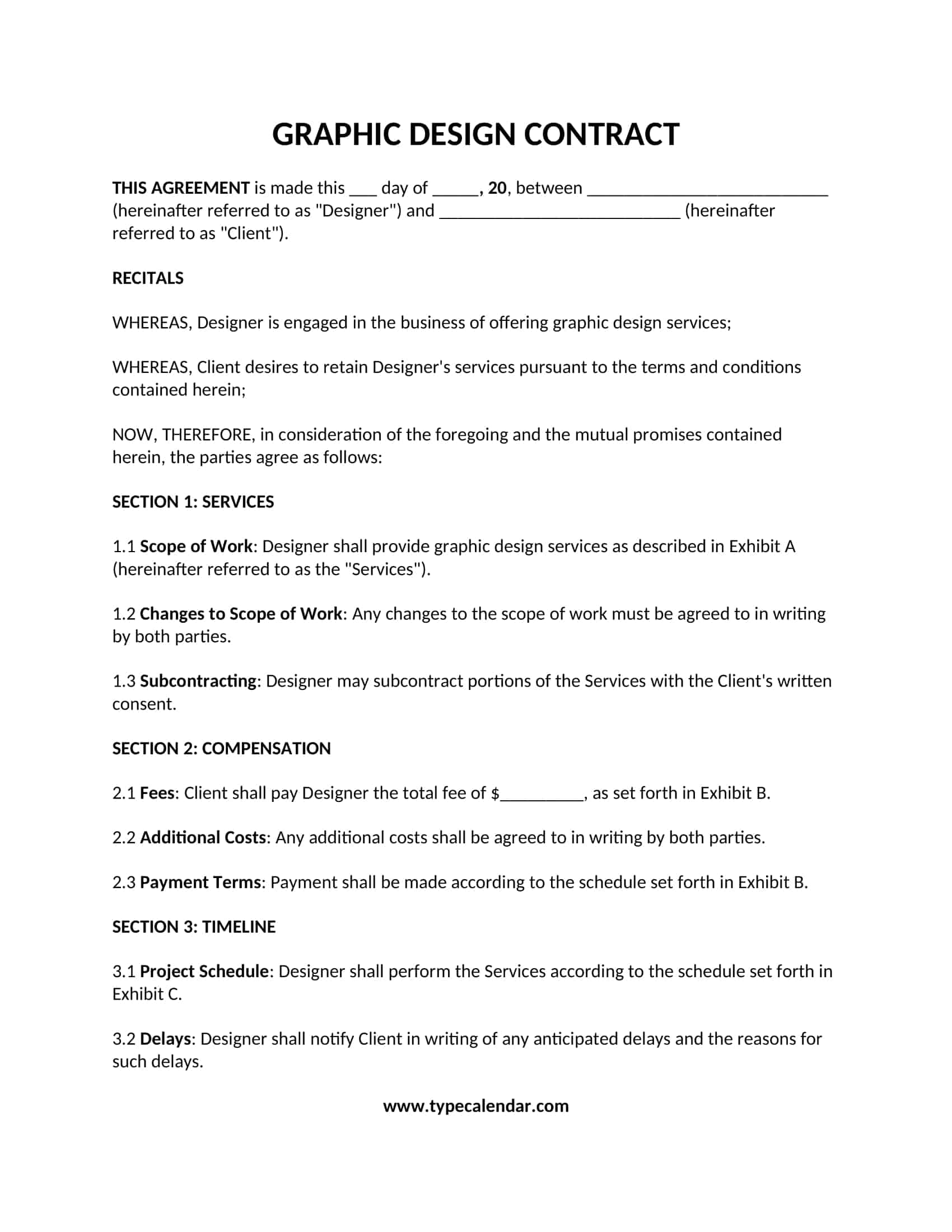



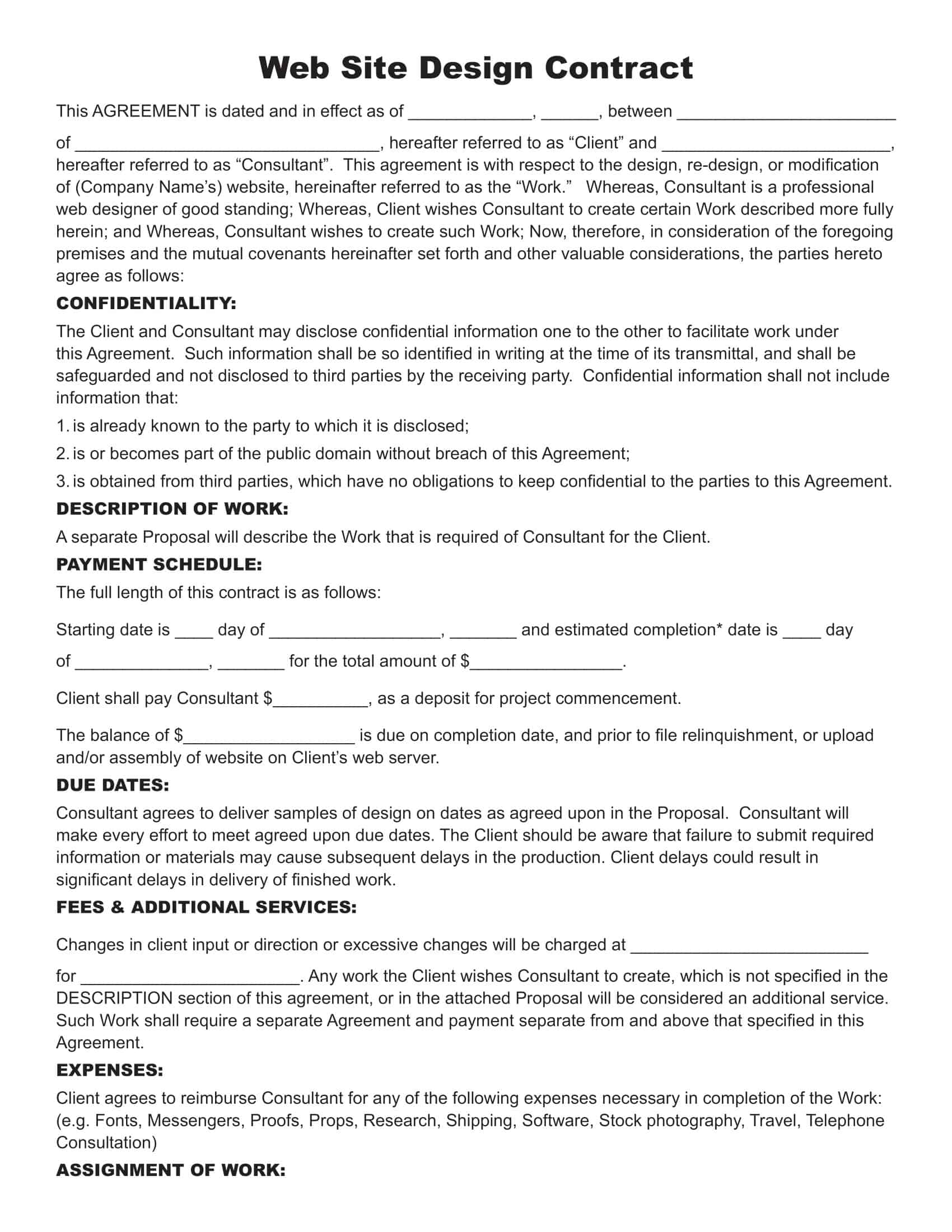
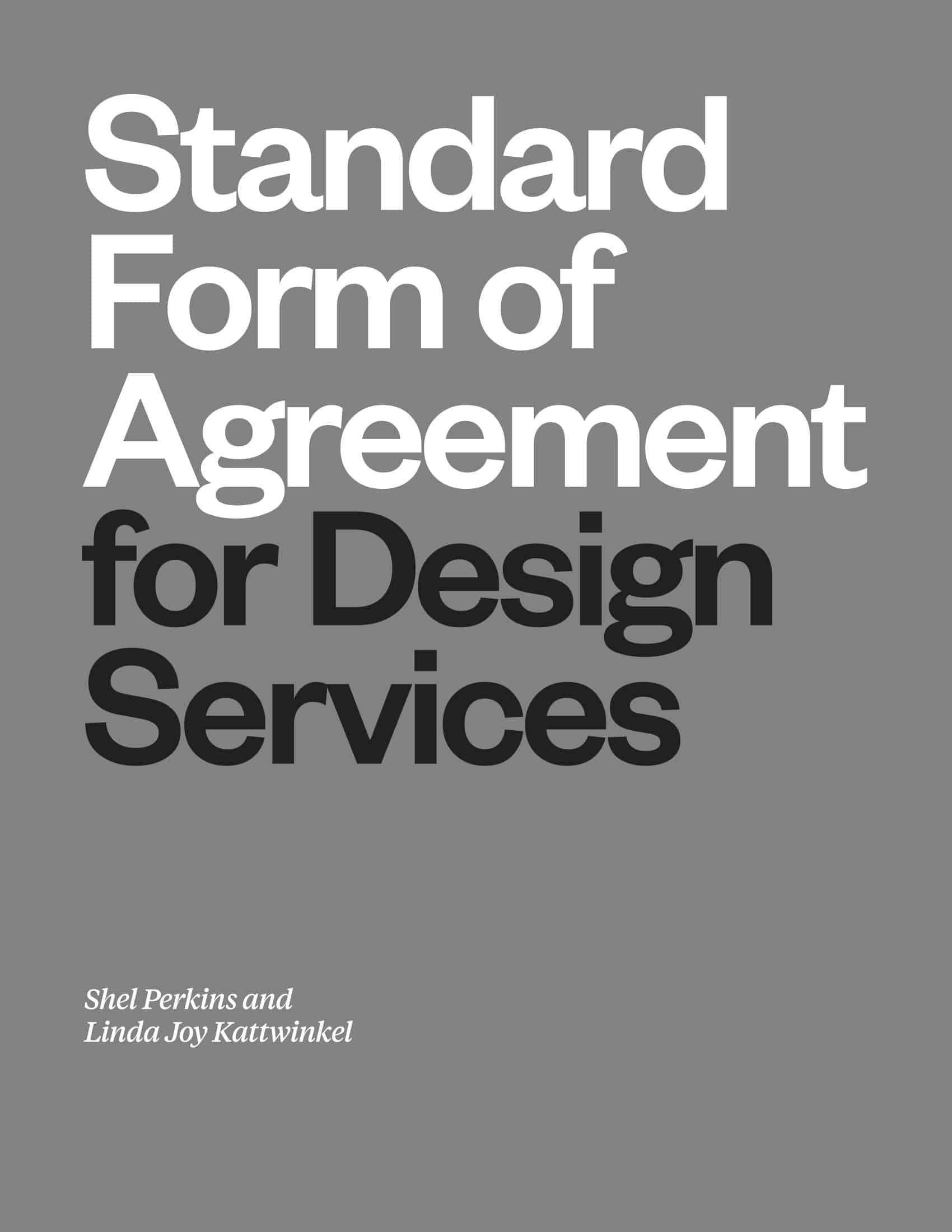




![Free Printable Roommate Agreement Templates [Word, PDF] 1 Roommate Agreement](https://www.typecalendar.com/wp-content/uploads/2023/06/Roommate-Agreement-150x150.jpg)
![Free Printable Land Contract Templates [Word, PDF] Simple 2 Land Contract](https://www.typecalendar.com/wp-content/uploads/2023/05/Land-Contract-1-150x150.jpg)
![Free Printable Catering Contract Templates [Word, PDF] Simple 3 Catering Contract](https://www.typecalendar.com/wp-content/uploads/2023/05/Catering-Contract-1-150x150.jpg)
